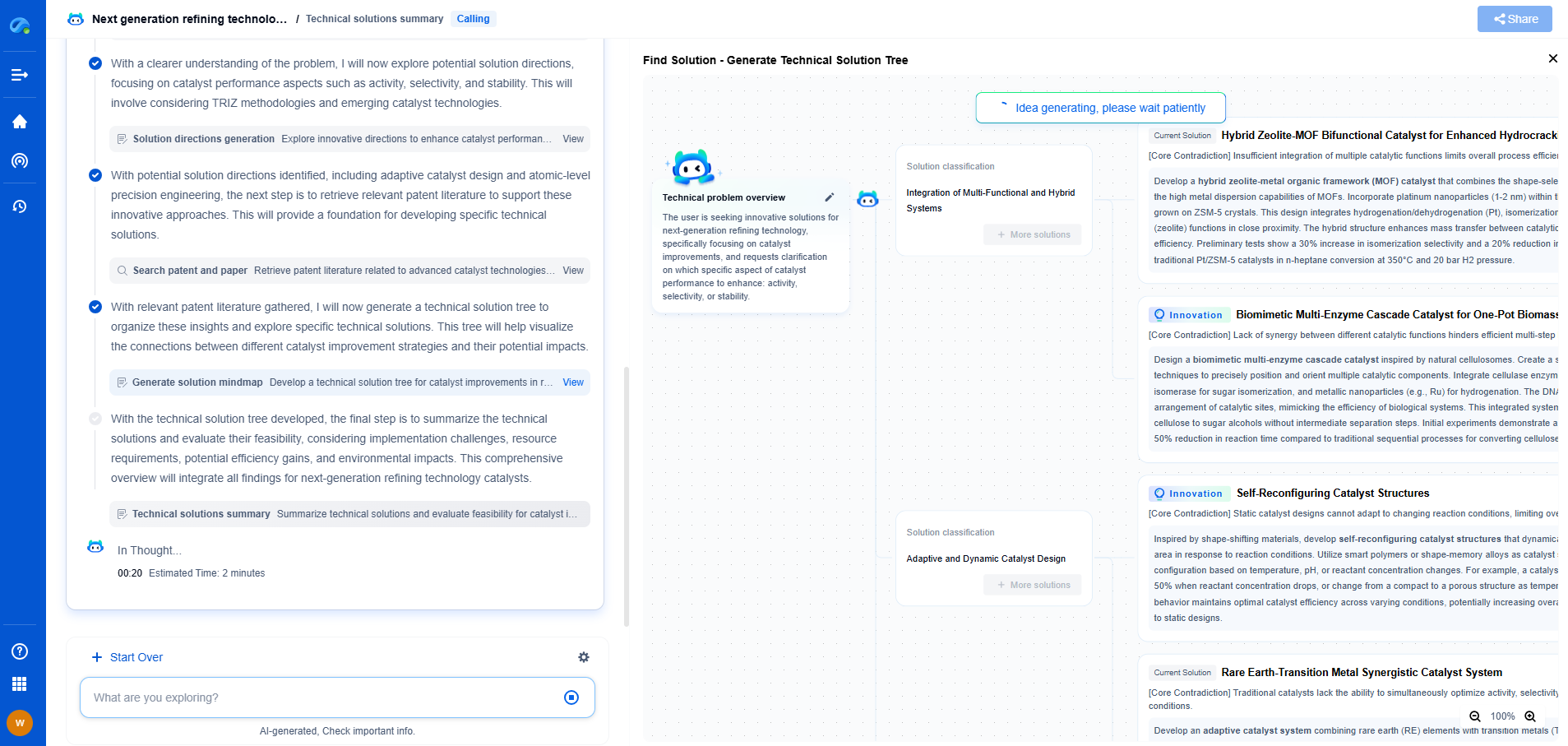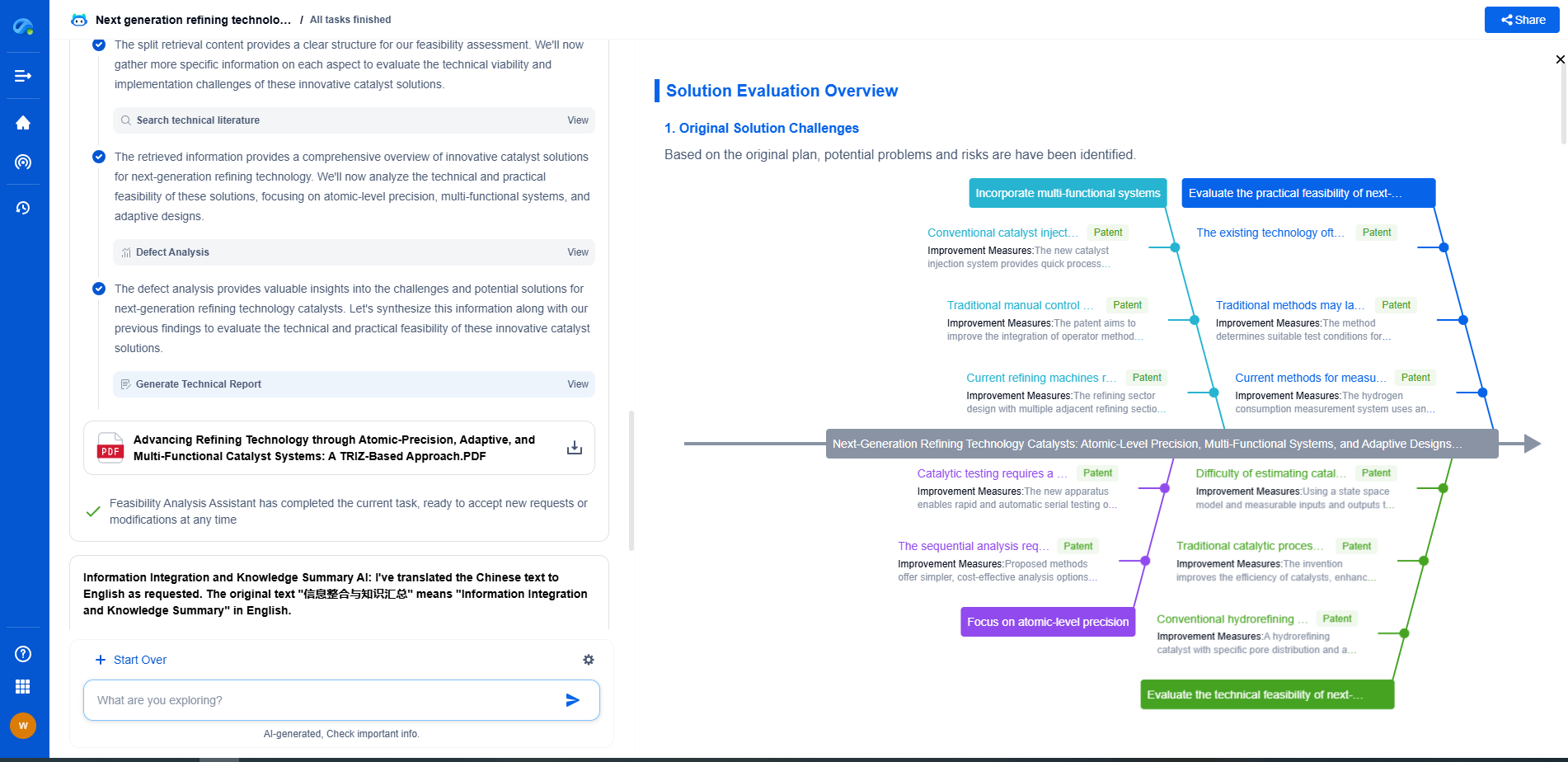How Solar Tracking Algorithms Maximize Energy Harvesting (Single vs. Dual-Axis)
JUL 22, 2025 |
Solar energy is increasingly becoming a significant player in the global energy landscape. As the demand for renewable energy sources continues to rise, optimizing the efficiency of solar power systems is crucial. One innovative approach to harnessing more energy from the sun is through solar tracking systems. These systems adjust the orientation of solar panels throughout the day to maximize their exposure to sunlight. The two main types of solar tracking systems are single-axis and dual-axis trackers. This blog explores how the algorithms behind these systems work and how they can enhance energy harvesting.
Understanding Solar Tracking Algorithms
At the heart of every solar tracking system is a sophisticated algorithm that determines the optimal position for solar panels. These algorithms are designed to calculate the sun's position in the sky at any given time and adjust the panels accordingly. By doing so, they ensure that the panels capture the maximum possible sunlight, thereby boosting energy output.
Solar tracking algorithms typically use a combination of astronomical data, real-time positioning, and sometimes weather data to make precise adjustments. They are programmed to follow the sun’s path from east to west throughout the day, and in some cases, adjust for the sun’s seasonal north-south movement. The effectiveness of these algorithms directly influences the efficiency of the tracking system.
Single-Axis Solar Tracking Systems
Single-axis solar tracking systems rotate on one axis, typically oriented north to south, allowing the panels to follow the sun's path from east to west. This type of system is simpler and more cost-effective than dual-axis systems, making it a popular choice for large-scale solar farms.
The algorithm for single-axis systems focuses on optimizing the east-west movement of the panels. By maintaining a perpendicular angle to the sun's rays, these systems can increase energy output by 20-30% compared to fixed-panel installations. However, single-axis trackers do not adjust for the sun’s elevation, which can lead to suboptimal energy capture during certain times of the year.
Dual-Axis Solar Tracking Systems
Dual-axis solar tracking systems offer a more comprehensive solution by allowing solar panels to rotate on both the horizontal and vertical axes. This capability enables the panels to track the sun's movement more precisely, adjusting not only for daily east-west motion but also for seasonal changes in the sun's elevation.
The algorithms for dual-axis systems are more complex, as they must account for both axes of movement. These systems are capable of maintaining an optimal angle to the sun throughout the year, significantly increasing energy capture. In fact, dual-axis trackers can enhance solar energy generation by up to 40% compared to fixed systems. Despite their higher cost and complexity, the increased energy output makes them a worthwhile investment for projects where maximum efficiency is desired.
Choosing Between Single and Dual-Axis Systems
The decision to implement a single or dual-axis solar tracking system depends on several factors, including budget, space, and specific energy goals. Single-axis systems are ideal for projects where cost-effectiveness and simplicity are priorities. They provide a substantial boost in energy output without the additional complexity of dual-axis tracking.
Conversely, dual-axis systems are best suited for situations where maximizing energy production is crucial, and the budget allows for a higher upfront investment. These systems are particularly beneficial in areas with significant seasonal variation in sun angle, as they can consistently maintain an optimal orientation throughout the year.
Conclusion: The Future of Solar Tracking Algorithms
As technology advances, solar tracking algorithms are becoming increasingly sophisticated, incorporating artificial intelligence and machine learning to further optimize solar panel positioning. These innovations are paving the way for even greater efficiency and energy output in solar power systems.
In conclusion, solar tracking algorithms play a vital role in maximizing energy harvesting. By choosing the right type of system—single or dual-axis—based on individual project needs, solar power systems can achieve greater efficiency and contribute more effectively to the global transition towards sustainable energy.
As solar technology races ahead—from perovskite cells to tandem architectures, from anti-reflective coatings to transparent electrodes—staying on top of fast-moving innovation has become a strategic imperative.
Patsnap Eureka, our intelligent AI assistant built for R&D professionals in high-tech sectors, empowers you with real-time expert-level analysis, technology roadmap exploration, and strategic mapping of core patents—all within a seamless, user-friendly interface.
⚡ Ready to accelerate your solar innovation journey? Try Patsnap Eureka today and let AI help you harness the full power of the sun—and your IP strategy.
- R&D
- Intellectual Property
- Life Sciences
- Materials
- Tech Scout
- Unparalleled Data Quality
- Higher Quality Content
- 60% Fewer Hallucinations
Browse by: Latest US Patents, China's latest patents, Technical Efficacy Thesaurus, Application Domain, Technology Topic, Popular Technical Reports.
© 2025 PatSnap. All rights reserved.Legal|Privacy policy|Modern Slavery Act Transparency Statement|Sitemap|About US| Contact US: help@patsnap.com

